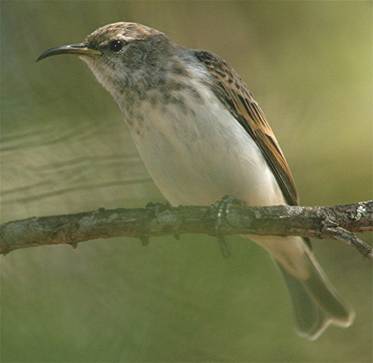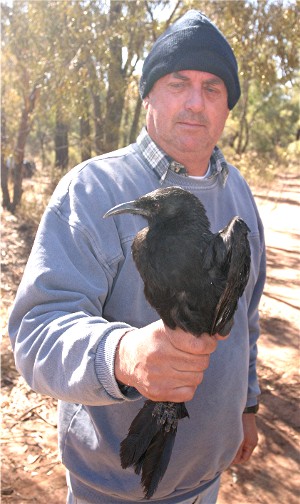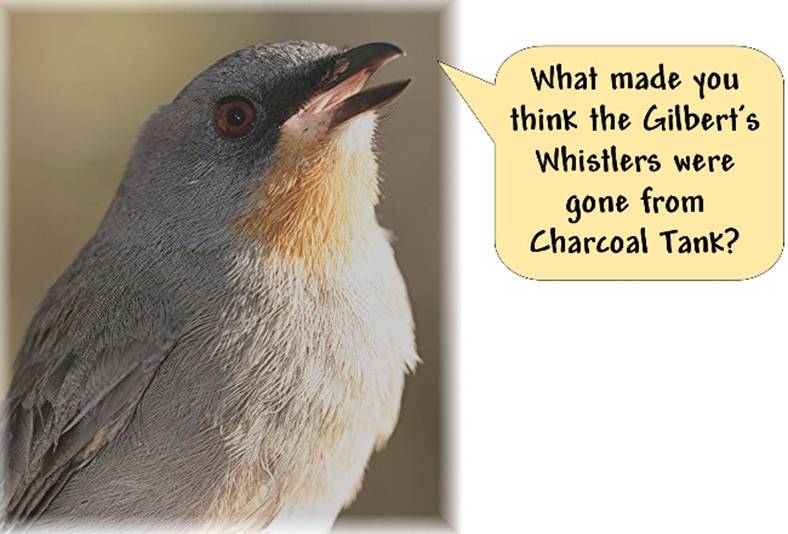And a fascinating week-end at Charcoal
Tank for the interested observer it was. This tiny enigmatic reserve is a
mere 31/2 hours from Canberra.
Almost the first birds I found in a corner of the reserve were a family of
Black Honeyeaters. This member of the family I take from the yellowish
gape to be an immature.

The next morning, when I checked the same
tree, it was being used by a (presumably transient) sunning Painted Honeyeater.
Probably the real highlight of the weekend was what caused Mark to be quite
choughed, (Mark shown here demonstrating the ‘Cornetto’ or ‘Olympic
Torch’ method of chough-handling:)

The highlight referred to was the capture,
without warning, of a splendid Gilbert’s Whistler, dispelling
concerns that this species had permanently departed from the area.

From: Mark Clayton
[
Sent: Thursday, April 20, 2006
8:22 PM
To: 'shaun bagley'
Cc:
Subject: RE: [canberrabirds]
honeyeater odds and sods
G’day Shaun,
I know the area you mean even though I
have never really spent much time there (I don’t go in that general
direction very often). If the ironbarks are in flower, and I have been told
that they are somewhat further north in the Griffith
to West Wyalong area, then it is not unusual
for so many species of honeyeaters, and other nectar loving species like
lorikeets and Swift Parrots, to be present. Also keep your eye open for Regent
Honeyeaters which are occasionally found there. This time of year the numbers
quite possibly could be augmented by migrating Yellow-faced and White-naped
Honeyeaters. I know from the times when the ironbarks at our banding site at
The Charcoal Tank NR near WW do their thing, both species of friarbirds can be
deafening, not to mention downright painful when we catch dozens of them
– they have VERY good claws. Hopefully we will find these sorts of
concentrations this weekend when we go out banding to CTNR.
Cheers,
Mark

